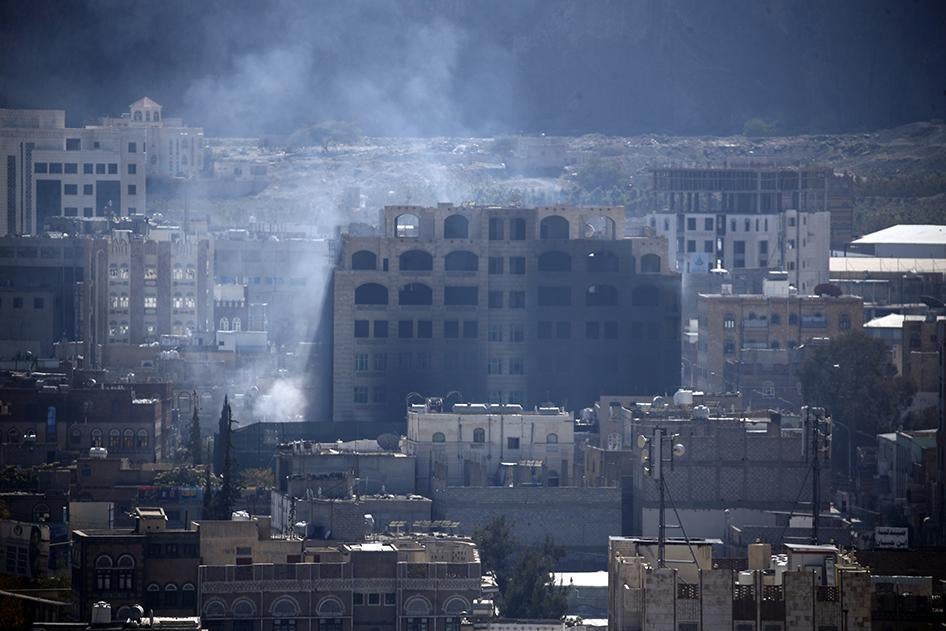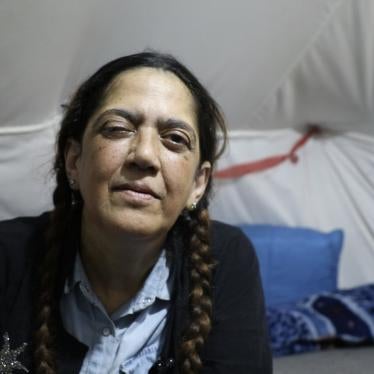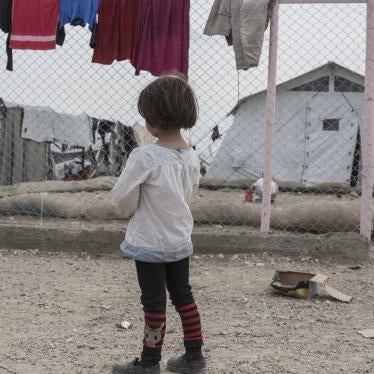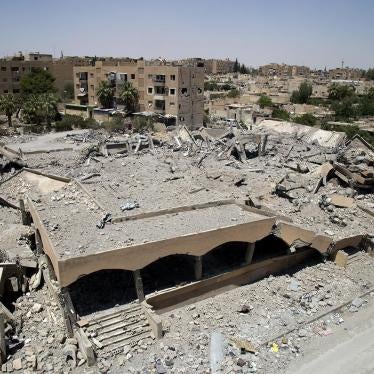(Beirut) – Lawless armed conflicts in the Middle East and North Africa (MENA) morphed into disastrous trends for the region in 2017, Human Rights Watch said today in releasing its 2018 World Report.
“Failed leadership, failed governments, and failed policies have brought nothing but catastrophe for the youth and future generations of the Middle East caught up in the region’s wars,” said Sarah Leah Whitson, Middle East and North Africa director at Human Rights Watch. “The legacy of these wars will be recorded as the ‘shame of the century’ for the Middle East.”
In the 643-page World Report, its 28th edition, Human Rights Watch reviews human rights practices in more than 90 countries. In his introductory essay, Executive Director Kenneth Roth writes that political leaders willing to stand up for human rights principles showed that it is possible to limit authoritarian populist agendas. When combined with mobilized publics and effective multilateral actors, these leaders demonstrated that the rise of anti-rights governments is not inevitable.
The top five trends in the region’s wars included:
- Chemical and Other Banned Weapons as the New Normal: The Syrian government, backed by its Russian allies, has used banned chemical weapons, and in Yemen, the United States-supported Saudi-led coalition has used widely banned cluster munitions. Human Rights Watch documented dozens of instances in which the Syrian government used chemical weapons in Syria, including littering Aleppo with chlorine-filled barrel bombs. The Islamic State (also known as ISIS) also used chemical weapons in both Syria and Iraq. The Russian government effectively blocked the only body whose job it was to attribute responsibility and pave the way for sanctions against Syria for using chemical weapons by vetoing the Joint Investigative Mechanism’s Mandate at the United Nations Security Council. Human Rights Watch also documented the Saudi-led coalition’s repeated use of cluster munitions in Yemen – including those made in the US and Brazil. Houthi-Saleh forces made wide use of anti-personnel landmines, despite repeated promises not to use this weapon.
“While the world moves to end the scourge of chemical weapons, cluster munitions, and landmines, the Middle East has made these disgusting weapons the new normal in warfare,” Whitson said. “It’s repellent that arms manufacturers continue to profit off the sale of banned weapons.”
- Starving Children During War: Beyond bombing homes, schools, hospitals, and irreplaceable cultural architecture in the region, the Syrian government and Saudi-led coalition have each resorted to blocking aid and impeding critical supplies from reaching starving children. The Syrian government imposes sieges in various regions of Syria, including in so-called “de-escalation zones” such as Ghouta, severely restricting access to food and medical care for the civilian population. The Saudi-led coalition imposed a nation-wide blockade on all of Yemen’s ports and airspace, in a country where malnutrition, cholera, and diphtheria were already ravaging children and have now reached epidemic levels. The UN secretary-general placed the Saudi-led coalition on his annual “List of Shame” for violations against children, despite extraordinary threats and bullying by the Saudi government to be taken off the list.
“It is deeply disturbing that Arab governments are deliberately starving Arab children during wartime,” Whitson said. “The cruelty and barbarism on display in the Middle East should lead to a collective hanging of heads in shame in the region.”
- Unlawful Video Executions by Warlords, National Armies Alike: It’s not just ISIS that has promoted itself with gruesome acts of violence and savagery. Human Rights Watch documented Iraqi army soldiers and Khalifa Hiftar-aligned Libyan militias proudly recording depraved acts of torture and executions of detainees. The Egyptian army and police in Sinai staged “shoot-outs” to cover up such executions. Governments failed to investigate, condemn, or appropriately punish repeated unlawful acts by their forces, despite sometimes promising to do so.
“It’s difficult to square the global outrage against ISIS horrors in the face of national armies and militias that mimic their tactics but receive military assistance from various foreign governments,” Whitson said.
- Ran Out of Men, Let’s Use Children: Houthi-Saleh forces resorted to recruiting children to help fight in Yemen. The UN secretary-general placed Houthi forces, as well as other parties in Yemen, on his annual “List of Shame” for their persistent recruitment of children. Human Rights Watch also documented the use of child soldiers in the Syrian conflict by multiple parties, including Kurdish armed groups and Iran’s Islamic Revolutionary Guard Corps. Iran actually recruited Afghan immigrant children to fight in support of Syrian government forces.
“As if slaughtering and starving the region’s children is not bad enough, some are now despicably dragging children to fight and die on the battlefield,” Whitson said.
- Arabs Flee the Arab World En Masse: Many people in the Middle East voted with their feet, fleeing their countries in record numbers over the past five years. Millions of Syrians escaped Syria, while the hundreds of thousands who sought refuge in Europe faced a widespread backlash against refugees. Libyans, Iraqis, Yemenis, and Egyptians joined the ranks of millions of refugees and internally displaced in the Middle East who have lost their homes, livelihoods, and communities.
“Is there any greater evidence of just how inhospitable the Middle East has become than the reality of millions of its people fleeing, or trying to flee, disastrous wars – caused by disastrous leadership?” Whitson said.







